Background:
Lately, I’ve been operating my GTI using a borrowed ARM FMIC to fact-check claims about using it with a hybrid turbocharger.

In addition to loaning the FMIC, ARM Motorsports also lent me their bicooler hoses to get comparison data.
While this data collection is ongoing, ARM has released another intercooler product, the ARM Competition FMIC. This new product uses a larger core and is front-mounted like the existing FMIC product.
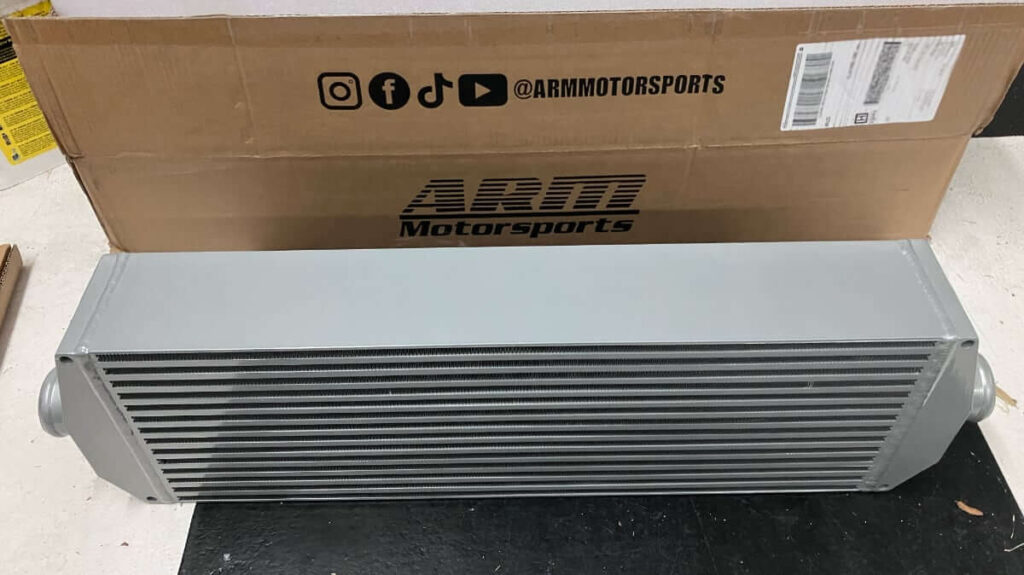
ARM sent over this new product to get performance data.
Dimensions:
The core dimensions are:
- Length – 25.25″
- Height – 9″
- Depth – 4.125″
- IC weight – 25 lbs
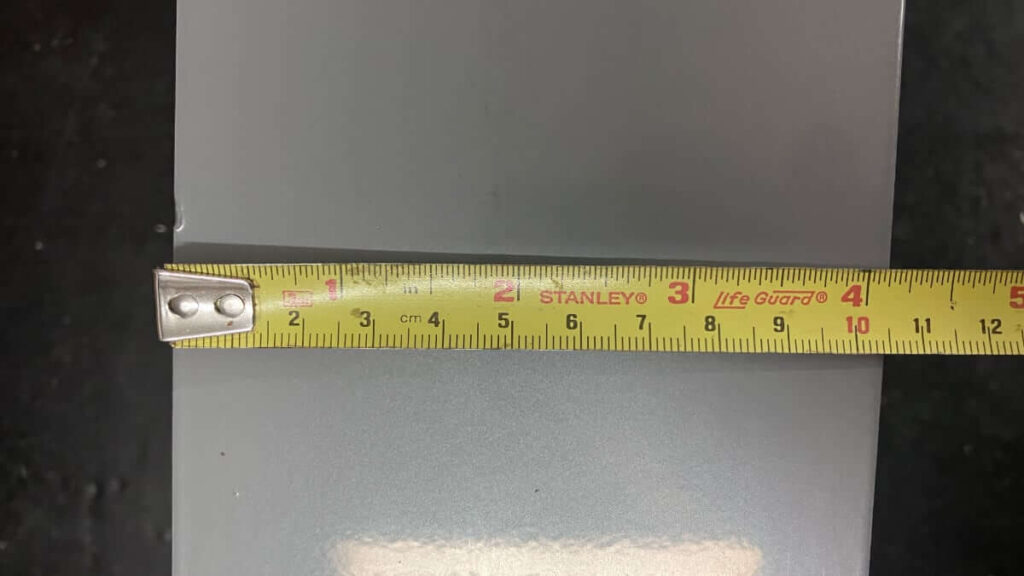
Test Products:
Because this new ARM intercooler can be configured as a bicooler, similar to the existing FMIC, the ARM Competition FMIC will be flow-tested individually and with two other intercoolers in a bicooler configuration.
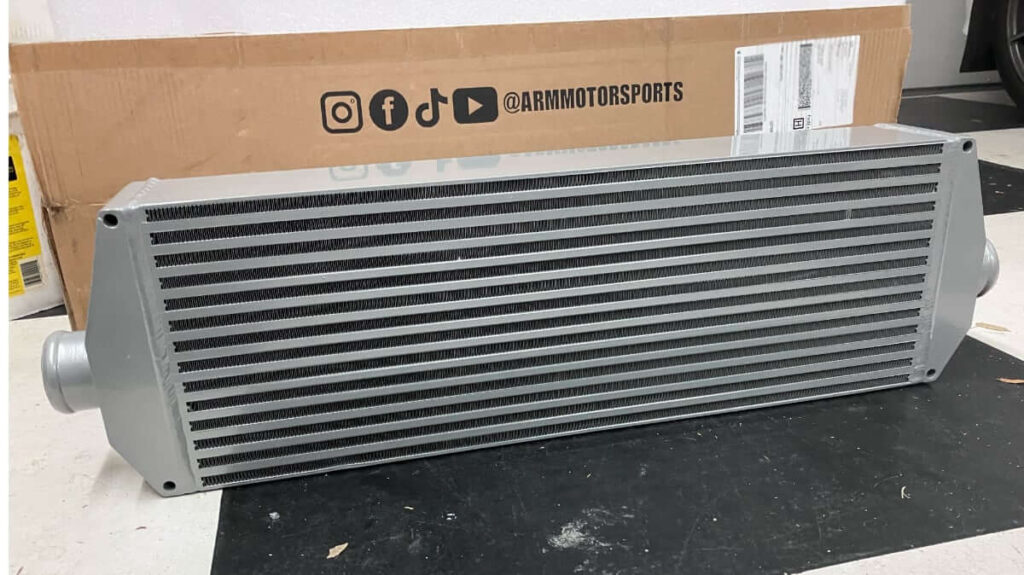
Two stock intercoolers will be paired with the ARM Competition FMIC to make the bicooler combinations.
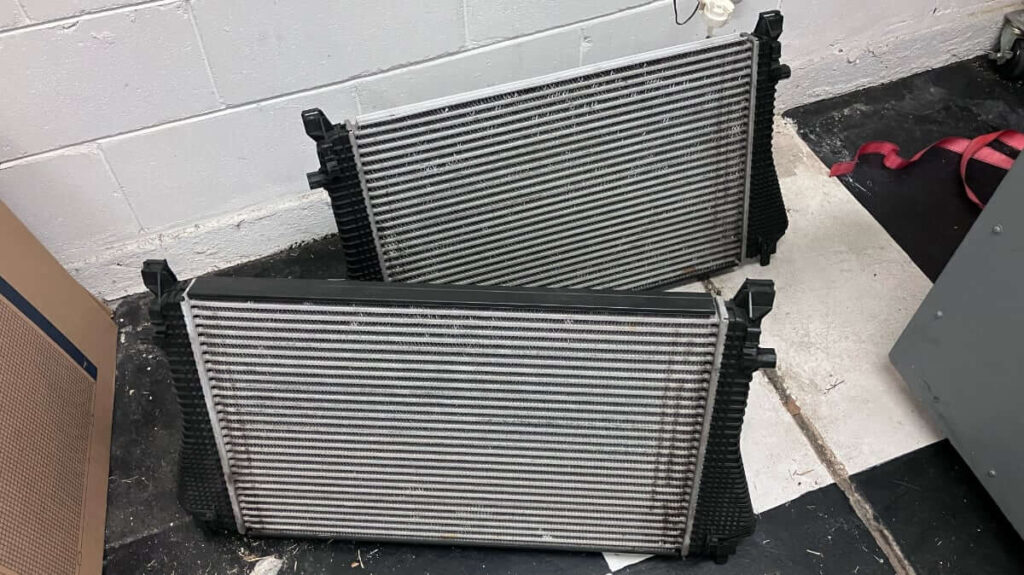
Because the stock Golf R intercooler flows more than the GTI intercooler, each is paired with the ARM Competition FMIC for this test.
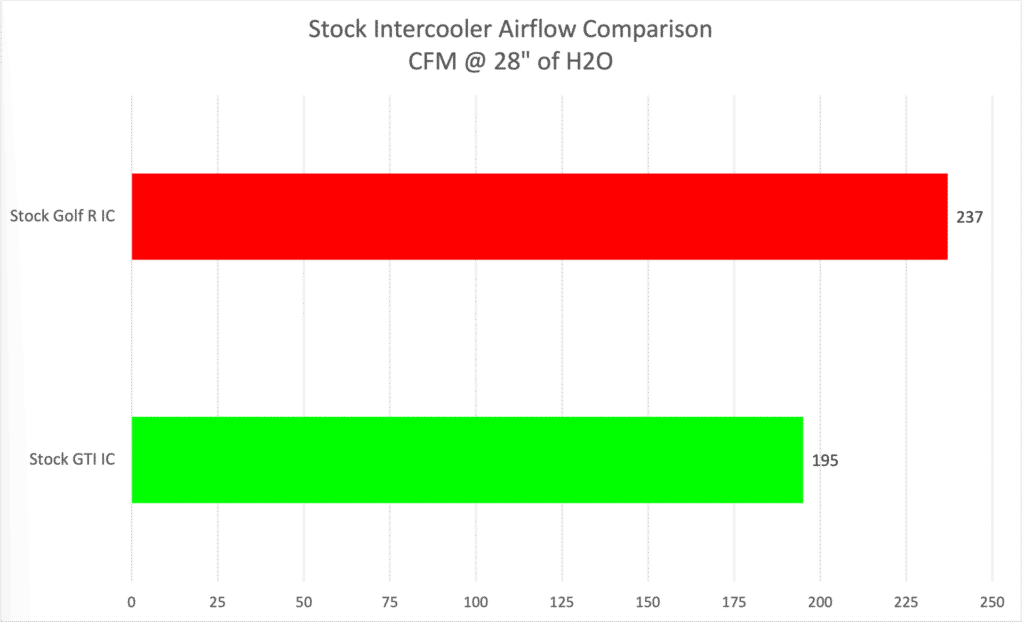
Test Process:
The ARM Competition FMIC is attached to the flow bench using an adapter that connects to the end tank.
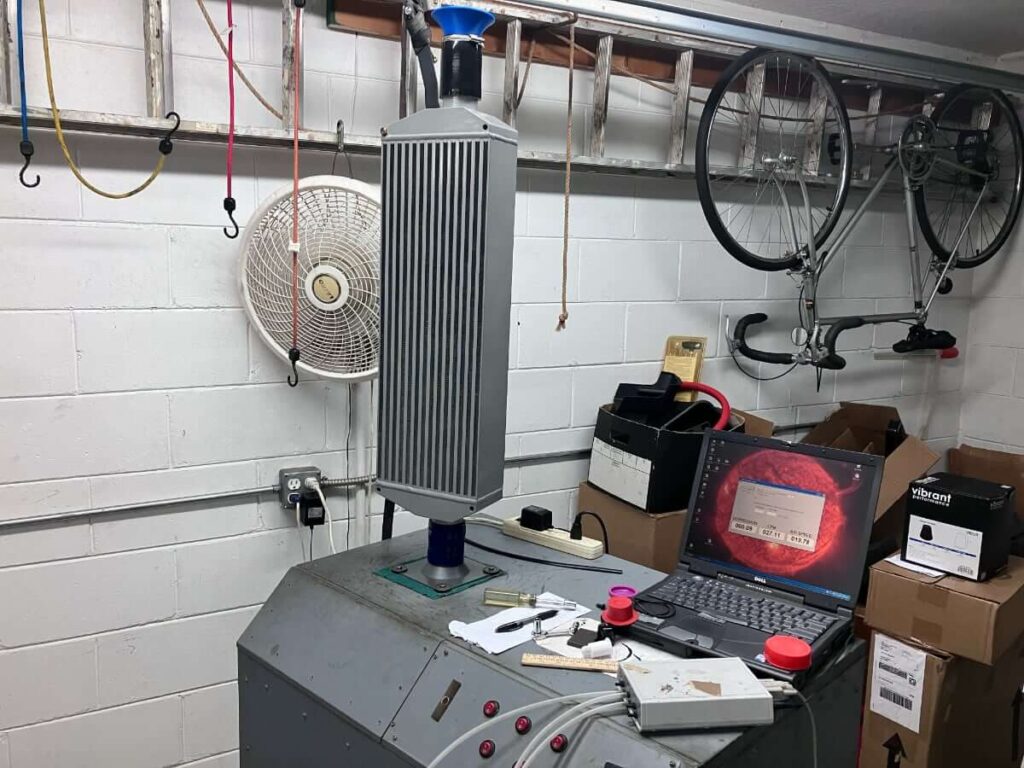
The upper end of the intercooler has a silicone coupler attached to a bellmouth to smooth air entry into the end tank.
The bicooler setup is similar to that when installed on the car. (Hanging this mess from the garage ceiling to test is a PITA)
The throttle body charge pipe is needed to join the bicooler outlet hose to the flow bench because there is not enough space between the stock IC core and the IC hose outlet to reach the intake of the flow bench.
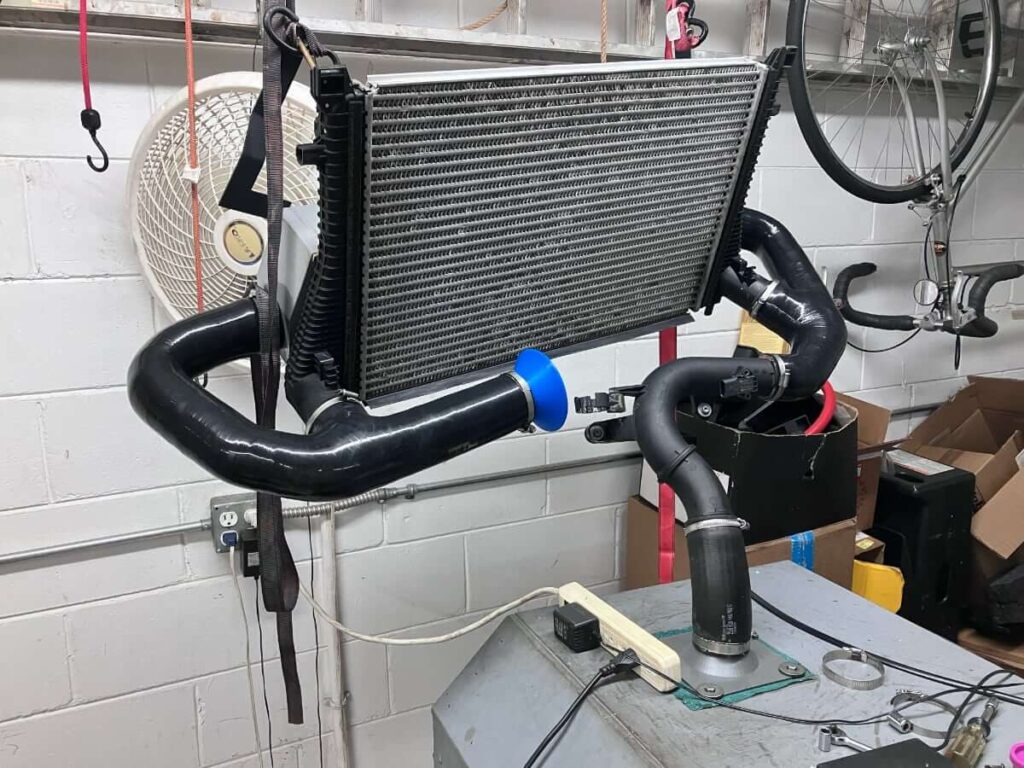
After testing the GTI IC and ARM FMIC as a bicooler, the Golf R IC is swapped in for the GTI IC.
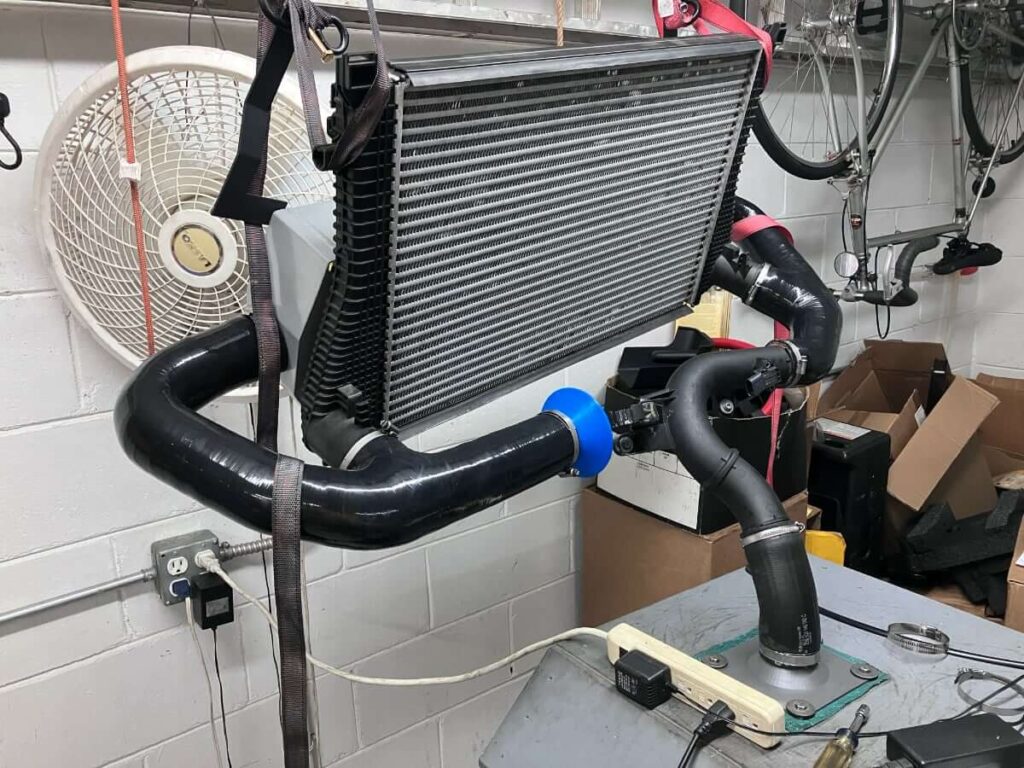
All testing is performed at a depression of 28″ of H2O.
Test Results:
The ARM Competition FMIC alone flows 180 CFM @ 28″ of H2O.
When the ARM FMIC is joined with the GTI IC, the flow rate increases to 258 CFM @ 28″ of H2O.
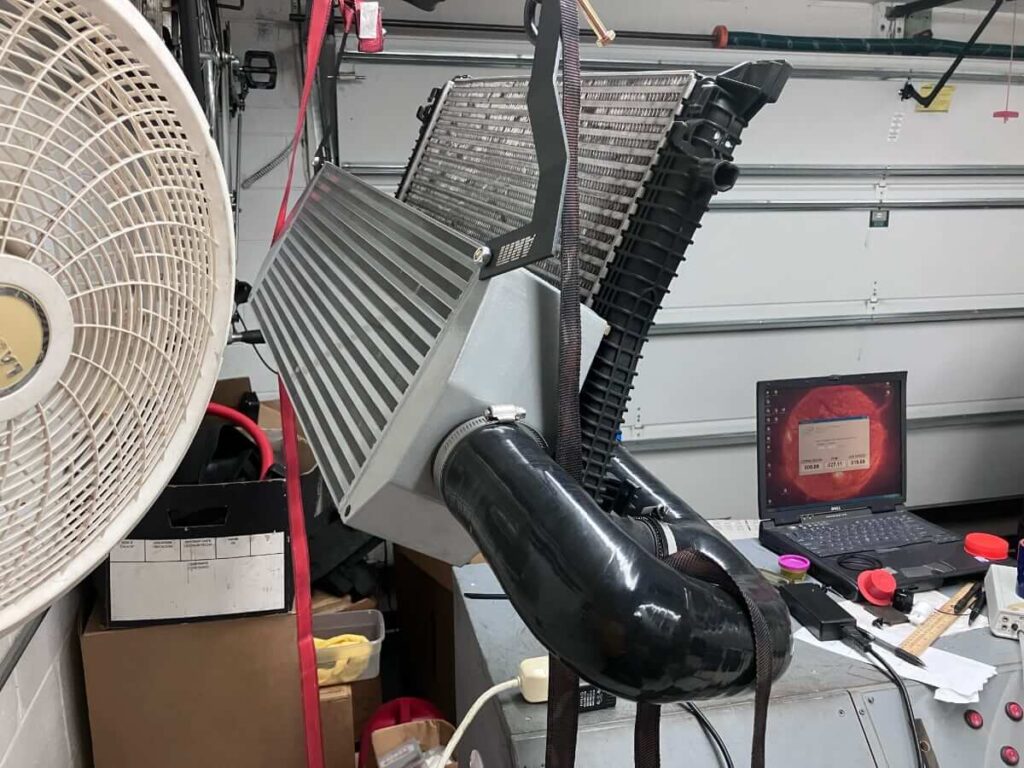
Using the Golf R IC instead of the GTI IC increases the flow rate to 271 CFM @ 28″ of H2O.
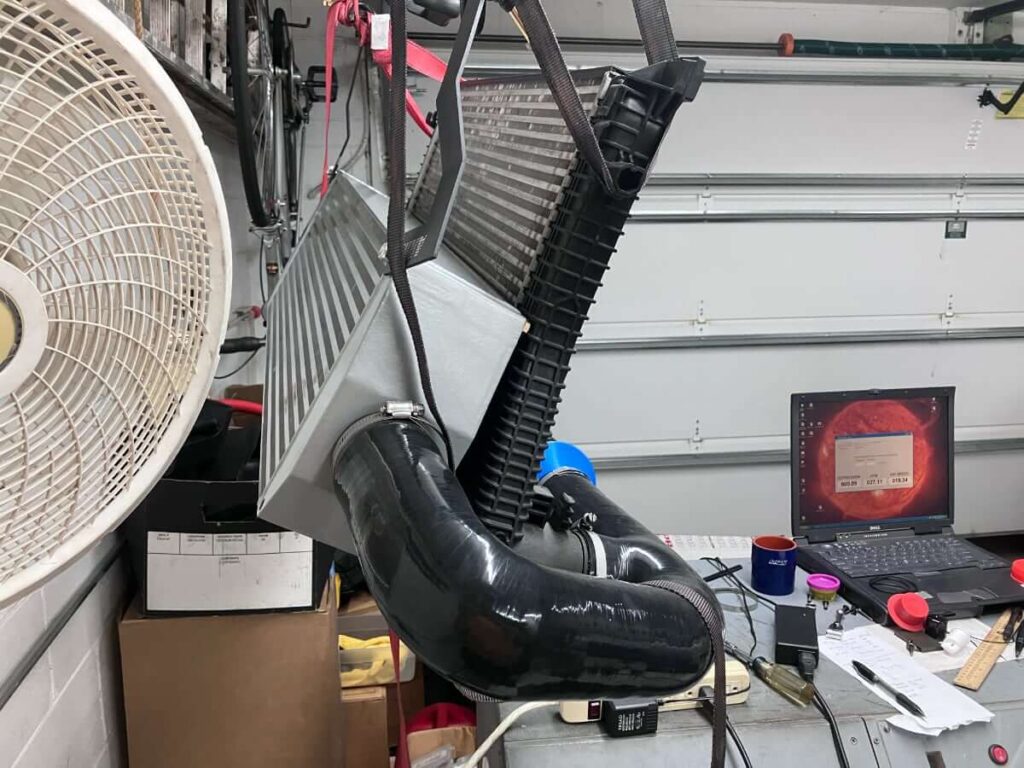
Shown below is a summary of all of the stand-alone FMICs and bicooler configurations that have been flow-tested.
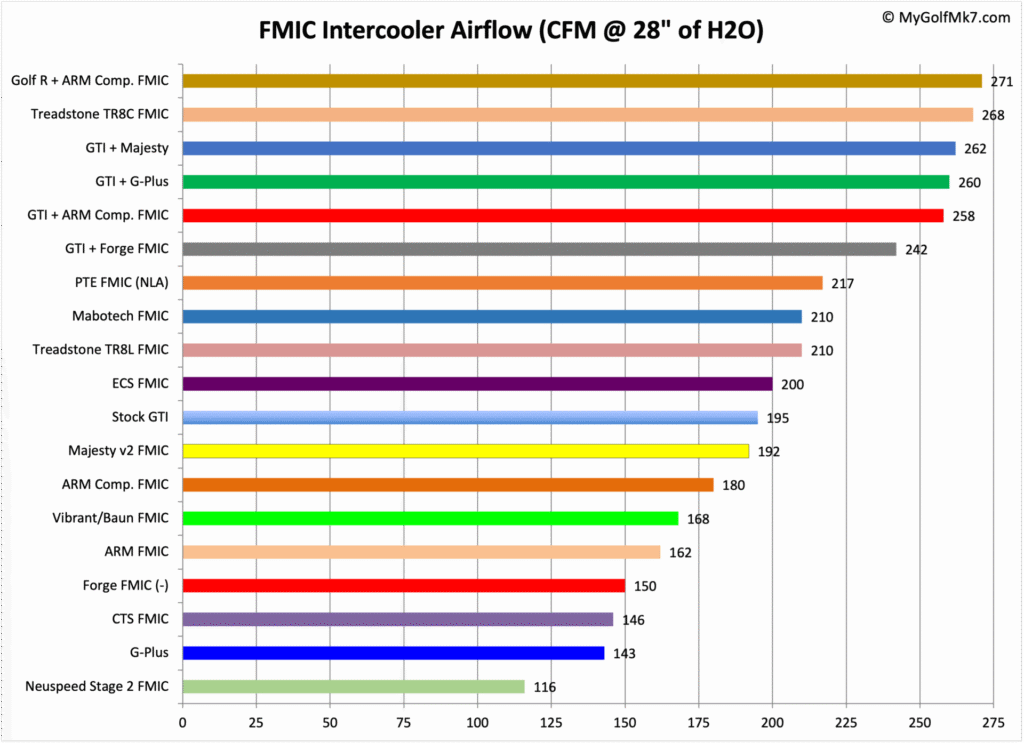
Revo Variation:
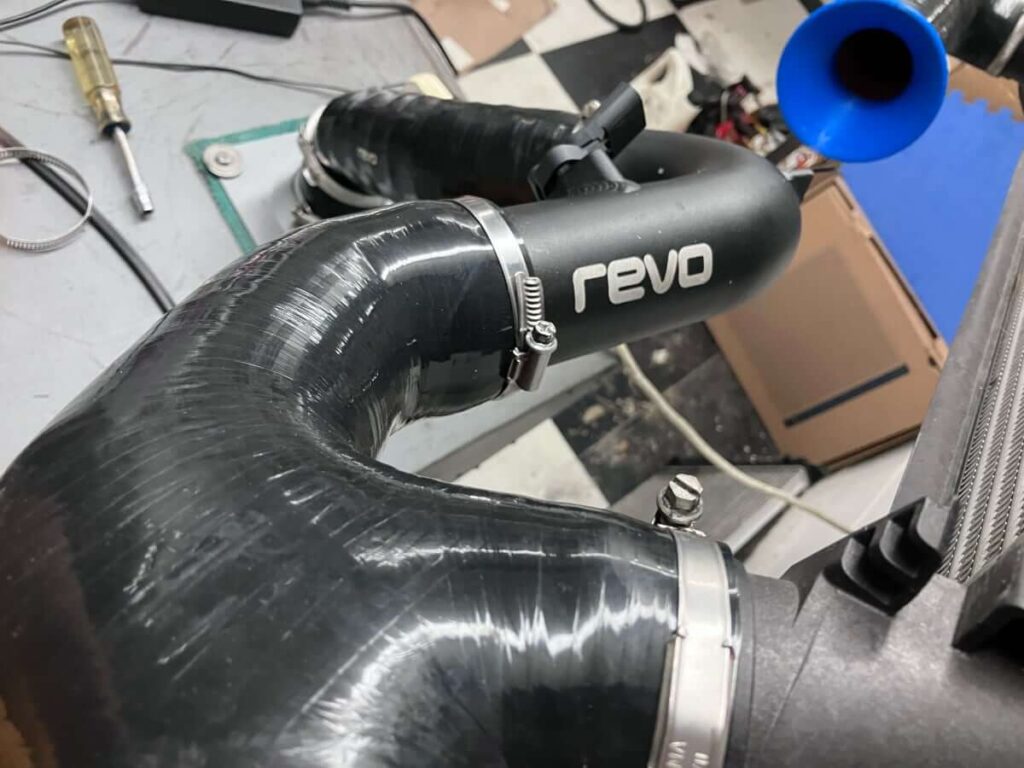
To determine whether an aftermarket charge pipe would increase airflow, the Revo throttle body charge pipe was substituted for the stock GTI charge pipe.
The flow rate did not change.
Conclusions:
The ARM Competition FMIC for the Mk7 GTI was the subject of a flow test. The intercooler was tested individually and in a bicooler configuration along with the GTI intercooler and then the Golf R intercooler.
The ARM Competition FMIC individually flows 180 CFM @ 28″ of H2O, an increase of 18 CFM compared to the older ARM FMIC.
When configured as a bicooler with the GTI IC, the ARM setup flows 258 CFM @ 28″ of H2O.
When configured as a bicooler with the Golf R IC, the ARM setup flows 271 CFM @ 28″ of H2O.
Both ARM Bicooler setups flow similarly to the highest flowing stock location aftermarket intercoolers.

Jeff, thank you for everything you’ve done with this site.
Any insight as to why three bicooler setups (GTI+ARMC/Majesty/GPlus) flow within 4CFM of each other, while the individual FMICs have a significantly larger disparity?
Additionally, would you be willing to add a composite CFM/deltaT comparison graph to the Intercooler Testing overview page? I’ve seen one posted, I believe on the Baun IC test report, and that would be a good reference to have on the summary page.
Best, Alex
You’re welcome Alex, thanks for the feedback about the site!
Concerning the Bicooler flow rates, in the test of the G-Plus I used an aftermarket charge pipe that has a larger silicone coupler at the throttle body.
The led me to use a larger adapter, one with a diameter that is about 6 mm greater than the one I normally use. At the time I didn’t consider the adapter would make much difference, since then I have found it can make a measurable difference – around 20 CFM.
If you subtract 20 CFM from the G-Plus number that would be roughly what it would flow with the other adapter, and is very close to the similarly sized Forge Bicooler.
As for the relative closeness of the GTI + Majesty and GTI + ARM Competition, the difference isn’t as large between these front mounts, and once the extra pathway is added through the stock IC, there seems to be an averaging effect taking place.
That finding that the adapter has a decent contribution to the overall flow rate has piqued my interest in trying a different size Throttle Body, which is in my queue of future tests to conduct.
As for the IAT/CFM combination chart, I removed that intentionally because I found it was being misunderstood and being cited as proof for conclusions that it didn’t support. The flow rate data is accurate and repeatable because the inputs are only the test depression, and using the correct attachment to the flow bench. The IAT data is very dependent on the collection method which is never precisely repeated. How warm the IC is when a pull starts, how long it has to recover, how many times this is repeated, all factor in to what the average IAT rise is.
A more accurate representation of the IAT value was used in a comparison I made of a few Tube & Fin design stock location ICs. It’s really a confidence interval that the values lie somewhere within.
This type of presentation is needed to convey what is going on, and boiling the data to a single number was not helpful because people were using a couple of degree differences to conclude one IC was better than another when the true IAT could be the opposite of what they were thinking.